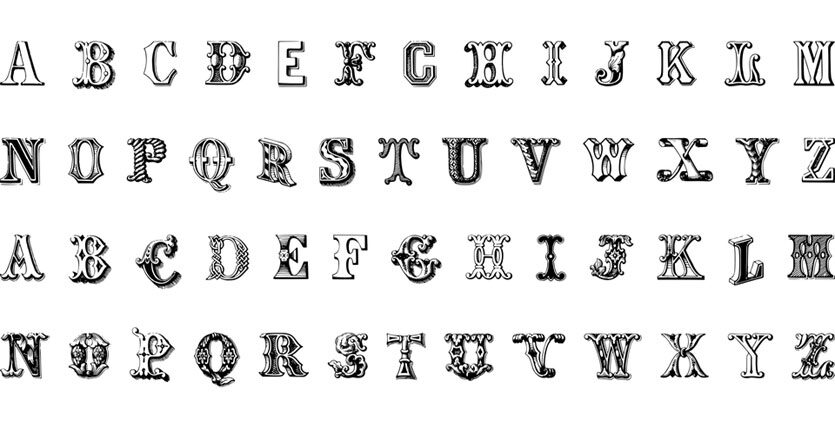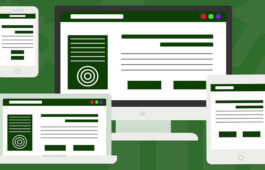Importance of Typography in Web Design
If you have a website, you need to make sure you create an impressive UX design in order to let people stay and interact with your website. And when it comes to ensuring the User experience of your website, you need to consider quite a lot of things. Choosing the right typography design can help ensure that people stay on your website and never mind interacting with it.
Looking at the renowned website, you will see one thing in common. And that is, all the websites are consistent when it comes to choosing the right type of typography in the web page interface. This is because you can make the most of your website if people who visit your website can find your website interactive and engaging enough.
So, in today’s article, we will cover all you should know about the importance of typography in web design and how you can leverage it to take your business to the next level.
Using random typography for your web pages provides you with any real benefit. Rather, you should be strategic when determining what type of typography you will use in your web pages, and we will guide you here.
What Is Typography in Web Design
Typography is a type of design letters or characteristics used in web pages as text. The critical role of typography in a particular website is to create a visual balance or graphical balance so that the webpage looks good, and the web pages can deliver a message to the targeted visitors.
The more a website can use the right type of typography, the better it is for the website to ensure user engagement.
Not only that, another key motto of using typography in web pages is to make the web pages readable. There are many types of typography out there but depending on the type of your website or your business, you should choose the typography.
How Can Typography Impact Your Website Design?
Typography is an essential element of website design, and it can significantly impact the overall user experience and aesthetic of the site. Poor typography choices can make your content hard to read, leading to user frustration and reduced engagement.
- Ensuring the Legibility of Your Website
Choosing the right font type, size, and color is crucial in ensuring the legibility of your website’s content. Additionally, typography can help reinforce your brand identity. Consistent use of typography across your website can help create a cohesive visual identity for your brand.
Using typography to emphasize important points or key messages, you can guide the user’s attention to important information on your website. Bold, italic, and different font sizes help create a hierarchy of information and make it easier for users to navigate your website.
- Enhancing Website’s Interface
Typography can also set the tone and mood for your website. Certain font types and styles can convey a sense of professionalism, playfulness, or elegance. A modern, clean, and minimalistic website may benefit from sans-serif fonts, while a more traditional and formal website may benefit from serif fonts.
The color and size of your typography can also affect the overall mood of your website. Warm colors and larger font sizes can create a sense of excitement, while cooler and smaller font sizes can convey a sense of calmness.
- Reducing Bounce Rate
No matter what type of website you have, you need to make sure the bounce rate of your website stays at a minimal rate. This is because the more bounce rates your website has the less beneficial it is for your website. But, if you are quite up to the mark regarding choosing and using typography for your website, you can take control over the excessive bounce rate of your website.
When people jump into your website and find your website interactive, they will never mind taking actions which can provide you with a lot of benefits for your website. So, as you can see, how important the role typography can play for your website.
What Should You Consider While Choosing Typography?
One of the important considerations in choosing typography for your website is accessibility. Choosing the right font type and size is essential for ensuring that your website is accessible to all users, including those with visual impairments.
For example, using a sans-serif font with a larger font size can make it easier for users with visual impairments to read your content. Furthermore, typography is a crucial aspect of website design. It can impact the overall user experience, your content’s readability, and your website’s mood and tone.
By choosing the right font type, size, and color, you can create a cohesive visual identity for your brand and guide users to important information on your website. Furthermore, it is essential to choose typography accessible to all users, including those with visual impairments, to ensure that your website is inclusive and welcoming to everyone.
Final Thoughts
Choosing the right typography is an important aspect of design as it sets the tone and mood of the overall visual communication. When selecting typography, there are several factors to consider. Firstly, the readability and legibility of the typeface are crucial, as the text must be easily readable by the intended audience. The size, spacing, and contrast of the letters should be considered to ensure that the typeface is clear and easy to read. Additionally, the style of the typeface should be appropriate for the message being conveyed. For example, a whimsical font may not be suitable for a formal business document.
The context of the design should also be taken into account when choosing typography. The typeface should match the overall design aesthetic and complement the other design elements. For example, a modern, sleek typeface may work well for a technology brand, while a more traditional font may be appropriate for a law firm or government agency.
Finally, it is important to consider the emotional impact of typography. The typeface can convey a sense of professionalism, playfulness, elegance, or urgency, among other emotions. By carefully choosing a typeface that matches the intended emotional response, designers can help to ensure that their message is effectively communicated to their audience.











